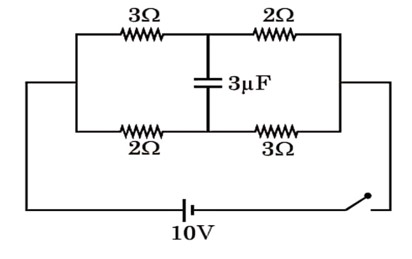Physics Electrostatic Potential and Capacitance
Get insights from 132 questions on Physics Electrostatic Potential and Capacitance, answered by students, alumni, and experts. You may also ask and answer any question you like about Physics Electrostatic Potential and Capacitance
Follow Ask QuestionQuestions
Discussions
Active Users
Followers
New answer posted
2 months agoContributor-Level 10
For a region of constant electric potential
(1) The electric field may be uniform
(2) The electric field may be zero
(3) There can be no charge inside the region
New answer posted
2 months agoContributor-Level 10
With the help of conservation of volume, we can write
With the help of conservation of charge, we can write
Q = 27 q.(2)
Potential energy of single drop = U1 =
Potential energy of bigger drop =
New answer posted
2 months agoContributor-Level 10
Let the charge of on each drop be q and radius of each drop be r.
When all drops are joined, radius,
Potential of the new drop,
New answer posted
2 months agoNew answer posted
2 months agoContributor-Level 10
According to relation between field and potential, we can write
New answer posted
2 months agoNew question posted
2 months agoTaking an Exam? Selecting a College?
Get authentic answers from experts, students and alumni that you won't find anywhere else
Sign Up on ShikshaOn Shiksha, get access to
- 65k Colleges
- 1.2k Exams
- 679k Reviews
- 1800k Answers



